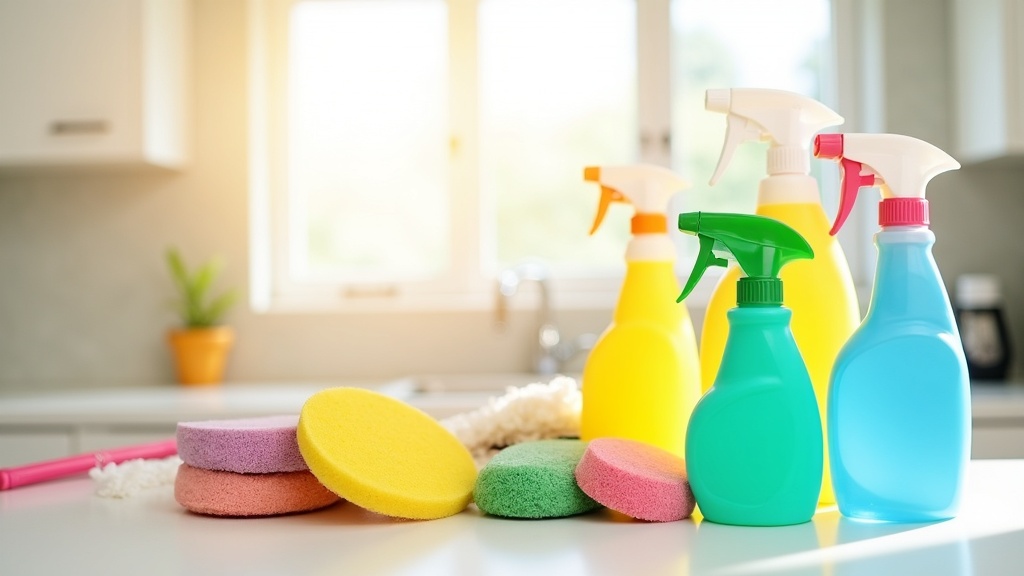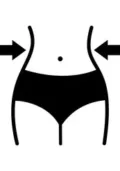Most people don’t think twice about how much energy they’re actually using up around the house, but the truth is, housework packs a secret punch when it comes to calorie burn. You don’t need to head to the gym or put on expensive workout gear. Regular chores can, surprisingly, keep you moving and help with your health goals, especially if you know which ones burn the most.

The Surprising Science of Calorie Burn and Housework
Calories are simply the units of energy your body uses for everything—from thinking and breathing to scrubbing the stove. What a lot of people don’t realize is that activities that look simple, like vacuuming or raking leaves, can get your heart rate up and your muscles working in ways that really add up over time. I’ve found it’s pretty motivating to know that every sweep, wipe, or mop means some hidden progress toward staying active.
Research shows that housework gets classified as moderate physical activity. According to Harvard Health Publishing, things like mopping the floor can burn about 150 calories per half-hour for someone weighing around 155 pounds. Gardening and yard work can go even higher. These aren’t just small numbers. They add up fast over weeks and months.
If you’re interested in all-natural solutions for weight management or want to dig into more resources, I recommend checking out elitewomenslim.com for some handy tips and ideas.
Everyday Chores That Burn More Calories Than You Think
Household tasks are often overlooked, but they do far more than just tidy up your space. Some chores keep your whole body moving and actually give you miniworkouts throughout the day. Here’s a breakdown of some common ones to give you a better idea:
- Vacuuming and sweeping: These can burn about 120–150 calories per half hour. The back and forth motion, combined with walking around and lugging the vacuum, gets your arms, legs, and core working together. Turn on some music and add a few extra lunges as you reach for corners, and you’ll get even more out of it.
- Scrubbing bathrooms or kitchens: Getting down low to clean bathtubs, sinks, and floors is great for building arm and leg strength. You’re using lots of muscles, especially if scrubbing or stretching.
- Window washing: Reaching up, stretching, and pacing as you go up and down ladders can burn as many calories as a brisk walk.
- Yard work and gardening: Digging, mowing the lawn, and raking leaves can all top 200–300 calories per hour, depending on your size and how intense you go.
- Making the bed and changing sheets: Pulling, tucking, and stretching back and forth can really get your heart rate going, even if it just takes a few minutes. It’s a sneaky way to get your body warmed up in the morning.
Getting the Most Out of Your Chores
Not all housework is equal. You can always find ways to turn regular chores into a little bit more of a workout. Here are practical and simple ways I make chores do double duty for my health:
- Keep a good pace: Instead of taking it slow, pick up your speed. Try timing yourself or putting on energetic music to keep things moving.
- Add extra movement: Squat instead of bending over to pick things up. Do calf raises while washing dishes, or pull off a few deliberate lunges while sweeping or mopping.
- Alternate arms: Switch hands when vacuuming or scrubbing to get both sides of your body working equally. This can help prevent injury and muscle fatigue.
- Stay mindful of posture: Keeping your abs tight and shoulders back can help turn daily tasks into lowkey core training sessions.
Tasks like cleaning out the garage or reorganizing closets become wholebody workouts. Lifting heavy boxes, carrying items, and squatting down to reach lower shelves all use multiple muscle groups and can build both strength and stamina over time.
Factors That Influence Calorie Burn at Home
The calories you burn while doing chores depend on a few things. Even small changes in how you approach these tasks can make a real difference:
- Body Weight: Heavier people tend to burn more calories during the same activity, just because it takes more energy to move a larger body.
- Intensity: The more energetic and consistent you are with your chores, the more you’ll burn. Turning your regular cleaning into a “cleaning sprint” session on the weekends can restore your space and help burn off some extra snacks.
- Duration: Sticking with a task for a while really does make a difference. Cleaning for 10 minutes gets your body moving, but 30–40 minutes means more calories burned and a tidier home overall.
- The Type of Task: Heavier lifting, plenty of bending or stretching, or activities that keep you standing and moving will up your calorie count more than things like folding laundry on the couch.
Turning Housework Into a Fitness Habit
Building a habit is often the trickiest part of staying active, but when I started looking at housework as a legit way to add movement, it felt way less like a chore (pun intended). Here’s what’s worked for me when it comes to keeping things consistent:
- Make a playlist or queue up your favorite podcast: Sometimes, I only get around to cleaning the kitchen because I can listen to an audiobook, and it makes me associate housework with relaxation or even fun.
- Set small, daily goals: Instead of doing marathon cleaning one day a week, I break big jobs into 10- or 15-minute tasks per day. I stay active throughout the week and don’t get burnt out.
- Celebrate progress: Mark your completed chores on a chart or reward yourself with a cup of tea or your favorite show. Positive feedback keeps the habit going.
- Connect chores to movement: Treat every bit of movement as a plus—for your living space and for your body. This really helped me stick with it and feel good about those daily tasks.
It’s helpful to recruit family members or roommates to join in. This social aspect can keep things light, divide up the workload, and spark healthy household competition. You could take turns picking music or challenge each other to “beat the clock” for finishing tasks—turning chores into small fitness events that everyone can join.
Potential Challenges and How to Work Around Them
Housework isn’t always a total substitute for exercises like running or strength training, especially if you’ve got specific fitness goals. Here are a few typical challenges and helpful workarounds based on my own experience:
- Motivation slump: If you struggle to get started, set a timer for short bursts or make plans to tackle chores with family.
- Pacing yourself: People might go too hard and wear themselves out, or do too little and don’t see any real benefits. Tracking your daily steps with a smartwatch or phone helps keep things balanced.
- Lack of variety: Housework can get repetitive, so try to rotate jobs or swap which chores you focus on each day. Switching up your routine brings in new movements, which is great for your body.
- Health limitations: If you have injuries or mobility issues, pick chores that fit your level and don’t hesitate to put adaptive equipment to work. It’s always wise to ask a professional if you have any concerns, ensuring you stay safe while moving.
The Role of Healthy Habits
Pairing housework with good nutrition, sleep, and hydration can really give a boost to your efforts and keep energy levels high. Whether your goal is weight loss or just staying more active, mixing these healthy choices together is key for long-term results.
If you’re exploring natural solutions for fat loss or want a jumpstart, sites like elitewomenslim.com have some extra tips that you might find useful.
Real-Life Examples: Calorie Burn in Everyday Housework
Here’s a simple look at how many calories might get burned through different kinds of chores, assuming a person weighs about 155 pounds. These totals can be a bit more or less depending on your own stats, but they give a solid ballpark estimate:
- 30 minutes vacuuming or sweeping: 120–150 calories
- 30 minutes scrubbing bathtubs or tile: 170–200 calories
- 30 minutes mowing the lawn (push mower): 165–240 calories
- 30 minutes gardening (digging, planting, weeding): 135–200 calories
- 30 minutes carrying groceries upstairs: 150–210 calories
Mixing a few of these chores into your week can burn as many calories as a few gym sessions, and you’ll have a cleaner, more inviting home at the end of the day.
Frequently Asked Questions
Question: Can housework really replace regular exercise?
Answer: Housework keeps you moving and is better than being sedentary, but it may not match higher-intensity exercise if your goals are to build significant strength or run a marathon. It’s a fantastic add-on or alternative for busy days, though.
Question: Does focusing on bigger chores burn more calories?
Answer: Yes. Tasks that involve more lifting, stretching, and movement burn more calories than lighter, stationary chores. Prioritizing these can bump up your daily calorie counts noticeably.
Question: How can I make sure housework stays effective for burning calories?
Answer: Mix up your tasks, keep up a steady pace, and slip in movement boosters like squats or lunges where you can. Tracking your steps or using fitness apps is a good way to stay motivated and double-check your activity level.
Final Thoughts
It’s pretty awesome to realize your daily chores do more than just tidy up the place. They help you stay active and can play a helpful part in your overall fitness. Stay mindful, keep things consistent, and sprinkle in some upbeat energy. You’ll see that housework’s hidden calorie burn adds up in ways that support both your health and your home. If you’re curious about natural weight management or want more tips, elitewomenslim.com has extra info that’s worth checking out.
